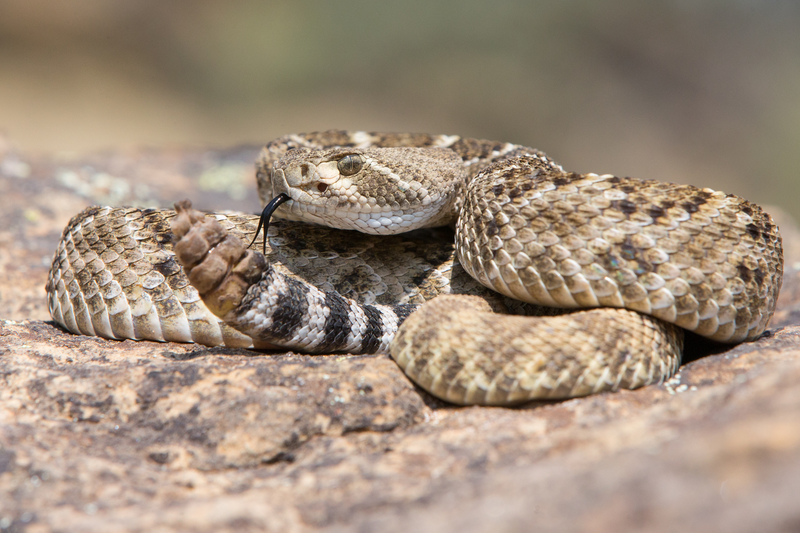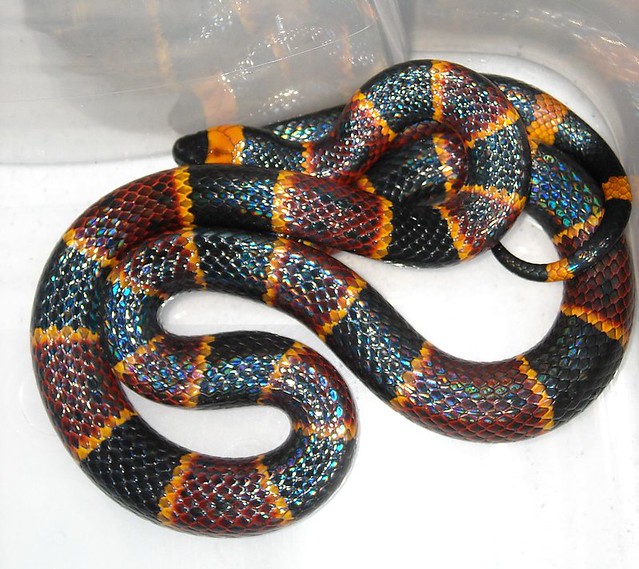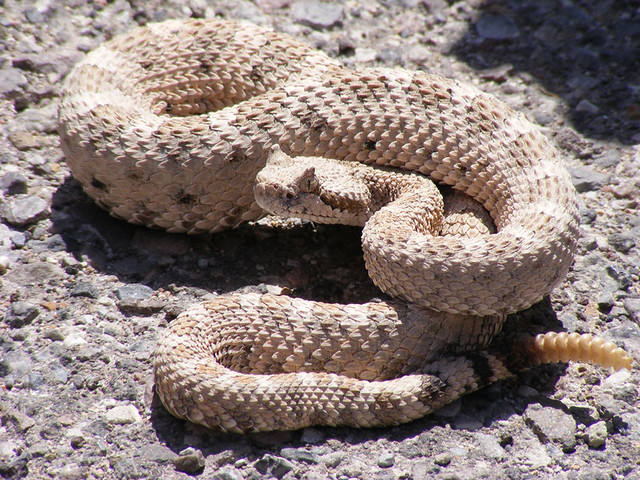Unfortunately, you don't necessarily need to be in the middle of the wild to come face to face with a snake. You could simply be weeding your garden when you realize a venomous snake has invited itself onto your property. Regardless of whether you're a wilderness junkie or not, it's important to learn how to identify venomous snakes and treat their bites in the event of a worst-case scenario.
How to Identify a Venomous Snake?
The Coral Snake
This snake and its subspecies tend to live in forested areas, spending most of its time underground or hiding in leaves. As well as enjoying staying in jungle areas, they are also found in the sand hills of Southeast United States.
It will coil its head into its body and raise its tail, which many people confuse with the head.
Keep in mind the rhyme ‘Red and yellow, kill a fellow. Red and black, friend of Jack’ if ever you come across one. On the venomous coral snake, the red and yellow bands are always touching.
The Rattlesnake
The large majority of rattlesnakes are found in South-western United States. Rattlesnakes also produce a hissing noise.
Rattlesnakes live in a variety of areas, including grasslands, swamps, bush and rocky areas.
Rattlesnakes coil their body, however instead of raising their tails, they will raise their head.
The Cottonmouth
Also know as the Water Moccasin, this snake is semi-aquatic and prefers to live in and around water, such as swamp or marsh areas.
The cottonmouth has a thick body with a blocky head and dark brown cross bands. Sometimes in older snakes, the skin coloring is so dark that it appears to have no visible markings.
Living in Southeastern US, the cottonmouth tends not to retreat in face of threat, which gives it a reputation for being aggressive.
The Copperhead
Its name is given by the light brown/read appearance and copper colored head. The outline of their cross bands tend to be darker, with the inside coloring being a lighter shade of brown.
The copperhead has a large range, across northern and southern US, with their largest range being from Alabama to Massachusetts and Illinois. They like to stay in forested or rocky areas such as mountains, next to streams or canyons. It’s not uncommon to see them in suburban areas.
Precautions to Avoid a Bite
- DON’T turn over logs or place your hands on rocks without checking first.
- Watch your step – be careful if you’re walking in long grass.
- Always zip up your tent and keep your boots inside it.
- DON’T fend off a snake with a stick.
What Should You do if You’re Bitten?
- Seek medical assistance straight away and try to describe key features of the snake.
- Lower the wound below your heart.
- Minimise the risk of a second bite – often snakes give a dry bite at first and a venomous bite if they need to fend you off again.
- Keep your heart rate down and minimise movement.
- If you’re not going to get help for a while, wash the wound with fresh water to prevent infection.
***Please note there has been some controversy as to whether or not you should apply pressure or use a tourniquet for a snake bite. Please see the following resources.
“Applying [PBI] with a pressure between 40 and 70 mm Hg in the upper extremity and between 55 and 70 mm Hg in the lower extremity around the entire length of the bitten extremity is an effective and safe way to slow the dissemination of venom by slowing lymph flow (Class IIa, LOE C). For practical purposes pressure is sufficient if the bandage is comfortably tight and snug but allows a finger to be slipped under it. Initially it was theorized that slowing lymphatic flow by external pressure would only benefit victims bitten by snakes producing neurotoxic venom, but the effectiveness of pressure immobilization has also been demonstrated for bites by non-neurotoxic American snakes….”
Do you have any experience with snakes or snake bites? Let us know if you have any tips for identifying venomous snakes and treating their bites!
Article Source: Survival-Spot






Make for good BBQ’ing